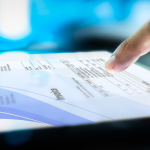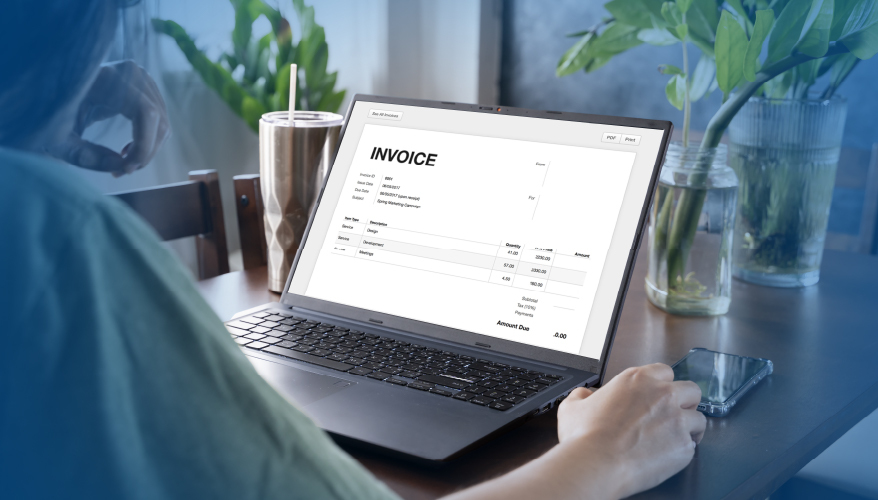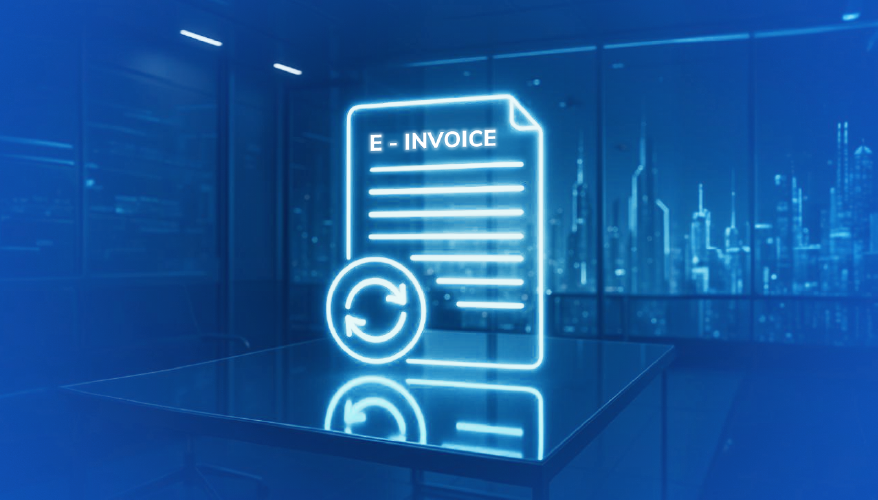
E-Invoicing in Malaysia: Everything you Need to Know
August 12, 2025
Why is IRIS MyeInvois a better e-Invoicing solution for large businesses in Malaysia
November 24, 2025Consolidated E-Invoicing in Malaysia: Everything You Need To Know

E-invoicing in Malaysia has been introduced to modernize tax administration, curb fraud, and streamline compliance. Under this framework, businesses must issue validated e-Invoices for transactions. However, to ease the burden of generating individual invoices for numerous small B2C sales, the Inland Revenue Board of Malaysia (IRBM) has introduced consolidated e-Invoicing.
Through this system, businesses can group multiple low-value transactions, where buyers do not request invoices, into a single monthly submission known as a consolidated e-Invoice. This approach reduces paperwork, simplifies recordkeeping, and ensures smoother compliance while maintaining reporting accuracy.
What Is a Consolidated e-Invoice?
A consolidated e-Invoice is a single e-Invoice that combines (aggregates) multiple individual sales or service transactions that would otherwise not each merit issuance of a separate e-Invoice. It is intended for those transactions where the buyer did not request an e-Invoice typically in retail, hospitality, or general consumer settings.
Instead of submitting e-Invoices for every small transaction in real time, the supplier issues ordinary receipts at the point of sale. Then, at the end of the month, all such receipts are compiled into one (or several) consolidated e-invoice(s), which is validated by IRBM. The consolidated e-invoice acts as the official record of revenue for those aggregated transactions.
This is especially useful for businesses with many low-value, walk-in customers who don’t require individual e-Invoices.
Why Use Consolidated Invoices?
- Reduced administrative burden — instead of issuing and submitting individual e-invoices for every small transaction, businesses need to only submit consolidated documents per month for those transactions.
- Simplified compliance — by grouping multiple low-value, “no request e-invoice” transactions, suppliers still remain compliant with IRBM’s e-invoice mandate without overburdening operations.
- Operational efficiency — fewer interactions with the e-invoicing validation system and easier recordkeeping, especially for sectors that have many retail or consumer sales.
- Flexibility during transition — IRBM offers a 6-month grace (relaxation) period during which businesses may use consolidated e-invoicing more liberally to ease into full compliance. The interim relaxation does not apply to large companies with an annual turnover exceeding RM25 million.
How Consolidated E-Invoicing Works?
Issuing Receipts vs. e-Invoices
- For transactions where the buyer does not request an e-invoice, the supplier issues a normal receipt (or bill) at the point of sale. These receipts are not individually submitted for validation immediately.
- Later, these receipts are aggregated into one consolidated e-invoice for submission.
Timing and Submission Deadline
- The consolidated e-invoice must be submitted to IRBM within 7 calendar days after the end of the month covering those transactions.
- The same 7-day rule applies to any consolidated self-billed e-invoice scenarios (more on that below).
Aggregation Methods / Line Item Structure
IRBM allows suppliers some flexibility in how they present aggregated transactions in the consolidated e-invoice:
- Each transaction as a line item — even though many, each receipt is individually listed.
- Continuous receipt number grouping — if the receipts follow a sequential numbering without gaps, they can be grouped as one line item. If there is a break, a new line begins.
- By branch/location — for businesses with multiple outlets, separate consolidated e-invoices may be issued per branch, applying either of the above methods within each branch.
Required Buyer Fields / Defaults
Even though the consolidated e-invoice is for “general public” (i.e., buyers without individual details), certain fields must still be filled with predefined defaults:
- Buyer name: “General Public”
- Buyer TIN: “EI00000000010”
- Buyer registration number / passport: “NA”
- Buyer address, contact, SST registration number: “NA” in those fields
- Description of goods/services: aggregated or itemized by receipt / continuous numbering scheme
Self-Billed Consolidated e-Invoices
In principle, consolidated e-Invoices do not apply to self-billing (where the buyer issues invoices for the supplier). However, exceptions exist:
- Transactions with non-business individuals (not conducting a business)
- Interest payments to the public
- Claims, compensation, or benefit payments to non-business individuals
- Self-billed transactions involving a taxpayer’s overseas branches or offices.
Validation & Notifications
- After submission, IRBM validates the consolidated e-invoice.
- The supplier will receive a notification of validation. Buyers do not receive notification (since the invoice is not tied to individual buyers).
- Once validated, the consolidated e-invoice acts as proof of income (for the supplier) or proof of expense (in self-billed cases) for tax purposes.
Handling Buyer Requests Post-Transaction
- If a buyer, after initially opting out of an e-invoice, requests one within the same month of the transaction, the supplier must issue an individual e-invoice for that transaction (i.e. exclude it from the consolidated pool).
- But if the consolidated e-invoice has already been submitted (i.e. past month boundary), the supplier may refuse the request, since the transaction is already locked into the consolidated submission.
Restrictions & situations where consolidation is not allowed except for companies with annual turnover less than RM 25 million
While consolidated e-invoices are helpful, they are not permitted in certain circumstances. Some key exclusions:
- B2B (business-to-business) transactions — these always require individual, fully detailed e-invoices.
- Transactions where buyer explicitly requests an e-invoice — even in B2C, if the buyer demands one, that transaction must be issued individually.
- High-value transactions above RM 10,000 (effective from January 1, 2026) — any single transaction exceeding that threshold must be individually invoiced, not consolidated.
- Certain industries / transaction types are outright excluded from consolidated invoicing:
Sale of motor vehicles (automotive)
Aviation (flight tickets, private charters)
Luxury goods and jewellery (pending further clarity)
Construction contracts under Income Tax (Construction Contracts) Regulations 2007
Wholesale/retail of construction materials
Licensed betting and gaming payouts (except some exemptions)
Payments to agents, dealers, or distributors, where those parties are compensated for sales/distribution roles
From Jan 1, 2026 new exclusions: electricity distribution/supply, and telecommunication services (postpaid, internet, device sales) cannot use consolidation.
During the 6-month transitional (relaxation) period, certain restrictions (like requiring individual invoicing upon request) may be suspended, but these exceptions will eventually reapply
Restrictions & situations where Self billed consolidation is not allowed except for companies with annual turnover less than RM 25 million
(a) Payment to agents, dealers, distributors, etc. (refer to Section 9 of this e-Invoice Specific Guideline for further details)
(b) Goods sold or services rendered by foreign suppliers (refer to Section 10.4 of this e-Invoice Specific Guideline for further details)
(c) Profit distribution (e.g., dividend distribution) (refer to Section 11 of this e-Invoice Specific Guideline for further details)
(d) Electronic commerce (“e-commerce”) transactions (refer to Section 14 of this e-Invoice Specific Guideline for further details)
(e) Pay-out to all betting and gaming winners¹
(f) Transactions with individuals (who are not conducting a business) (applicable only if the other self-billed circumstances are not applicable)
(g) Interest payment, except:
i. Businesses (e.g., financial institutions, etc.) that charge interest to public at large (regardless of whether they are businesses or individuals);
ii. Interest payment made by employee to employer;
iii. Interest payment made by foreign payor to Malaysian taxpayers;
iv. Interest payment to a related company (as defined in the Income Tax Act 1967) incorporated in Malaysia who provides centralised treasury services to its related companies; and
v. Late payment interest or charges imposed by Malaysian taxpayers.
Note that the Supplier is required to issue e-Invoice for exceptions mentioned above.
(h) Claim, compensation or benefit payments from the insurance business of an insurer
(i) Payment in relation to capital reduction, share / capital / unit redemption, share buyback, return of capital or liquidation proceeds.
Challenges & Issues Businesses Face
Even though consolidated invoicing alleviates some burden, businesses may still confront difficulties:
- Meeting the tight submission deadline
The 7-day post-month requirement can create pressure, especially for businesses without automated systems. Manual consolidation may lead to delays. - Accurate recordkeeping
All receipts must be carefully recorded, tracked by reference number, amounts, time, etc. Any discrepancies or missing data can lead to validation errors or rejection. - Handling buyer requests mid-cycle
If buyers change their mind and request individual e-invoices during the month, the supplier must exclude that transaction from the consolidation which requires dynamic updating of the consolidated set. - System / technical integration
For businesses with legacy accounting or POS systems, implementing the aggregation and automated submission workflows can be tricky. Without proper tooling, the risk of human error is high. - Compliance risk
Mis-aggregation, missing fields, or late submissions could lead to rejections or penalties under the Income Tax Act or related e-invoice rules. - Scope ambiguity & evolving rules
As new restrictions (e.g. for telco, electricity, etc.) come into effect (starting Jan 2026), businesses must stay updated and adapt their processes.
Best Practices & Recommendations
To adopt consolidated invoicing effectively, businesses should consider the following:
- Segment by branch / location
If you operate multiple outlets, treating each branch separately can simplify aggregation logic and limit file sizes. - Monitor receipt numbering consistency
Use continuous numbering for receipts whenever possible to take advantage of grouping in consolidation (reducing line items). Avoid gaps or manual number assignment. - Track buyer requests early
Promptly capture whether a buyer wants an individual e-invoice. If yes, exclude that transaction from consolidation immediately to prevent duplication. - Maintain detailed internal records
Keep backup logs, receipt copies, timestamps, and audit trails to support the consolidated submission in case of queries or audits. - Stay updated on rule changes
With new exclusions (from 2026 onward) and evolving guidelines, regularly check IRBM / LHDN announcements and adapt systems as needed. For example, sectors like electricity and telecom will lose consolidation privileges. - Test early and pilot before full rollout
Run trials on smaller branches or a subset of transactions to validate the logic, detect errors, and refine processes before scaling.
Conclusion
Consolidated e-invoicing is a pragmatic adaptation within Malaysia’s e-invoicing framework, designed to ease the compliance burden on businesses that engage in numerous small retail or consumer sales. By aggregating multiple low-value transactions into a single validated monthly e-invoice, suppliers can streamline operations while still satisfying IRBM’s reporting requirements.
However, consolidated invoicing is not a universal option many transaction types and industries are excluded, and strict procedural rules (such as deadlines, data fields, and buyer requests) apply. The effectiveness of consolidation depends heavily on sound internal controls, robust systems, and staying current on regulatory changes (especially with new restrictions starting 2026).
For businesses considering consolidated invoicing, the key is to invest in technology, maintain accurate records, and adopt a process mindset so that aggregation and submission can be done reliably and compliantly.
How IRIS MyeInvois can help you with Consolidated E-Invoicing?
IRIS MyeInvois is a one-stop e-Invoice management solution for all business e-Invoicing needs. The solution is designed to help businesses with streamlining the invoicing processes, without the hassle of massive changes to the current system setup.
The IRIS MyeInvois solution seamlessly integrates with any ERP/billing system using APIs or SFTP to minimize disruptions, prepare e-invoices, share e-invoices, manage notifications, and maintain compliance with government mandates.
Users can also choose to go for bulk-uploads (.csv or .json) on the portal and use the inbuilt transformation tool to convert invoice data from their format to LHDN format (.xml or .json), pre-validate the data before submission, or calculate missing values. Additionally, users do not have to worry about the throttling or submission related limitations set by LHDN on the MyInvois portal. The users can further choose to raise Manual e-Invoices on the IRIS MyeInvois portal, if needed.
The businesses can also add multiple entities (TINs), Point of Business, and Users under the same umbrella subscription and work according to the organizational hierarchy with multiple levels of user management and secure access to the portal for all registered users under the full organization, selected business entities, or selected branches (PoBs), based on their roles and responsibilities.
IRIS MyeInvois is also PEPPOL-ready and hence, it provides a future-proof way for businesses to benefit from the digitization of invoicing and share invoices internationally using the PEPPOL network.
Businesses can also instantaneously share documents to all customers/vendors through the e-mail feature on IRIS MyeInvois portal, regardless of their availability on IRIS MyeInvois, the PEPPOL network, or consideration under e-Invoicing mandates.
Additionally, users can invite guests with view-only access to e-invoices on the platform, manage seller side/recipient side activities with the same account, and much more.
Read: E-Invoicing in Malaysia – Data Fields | E-Invoice Schema




